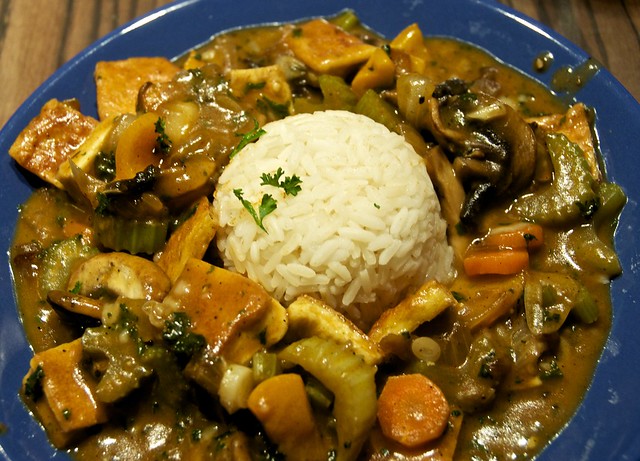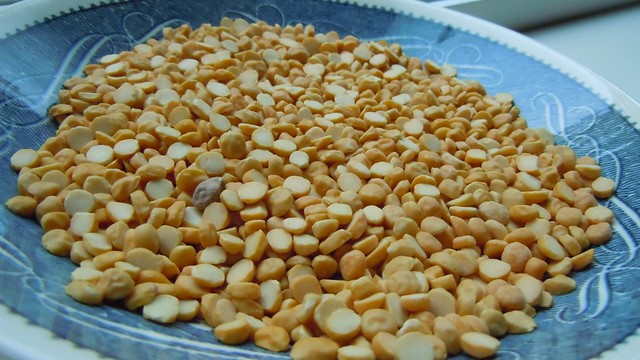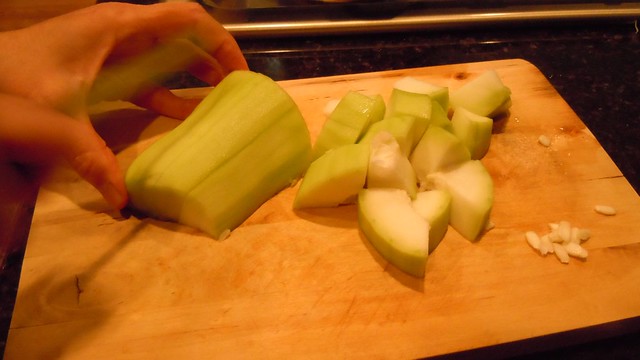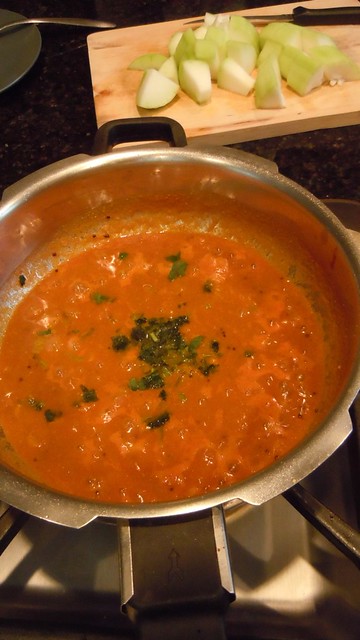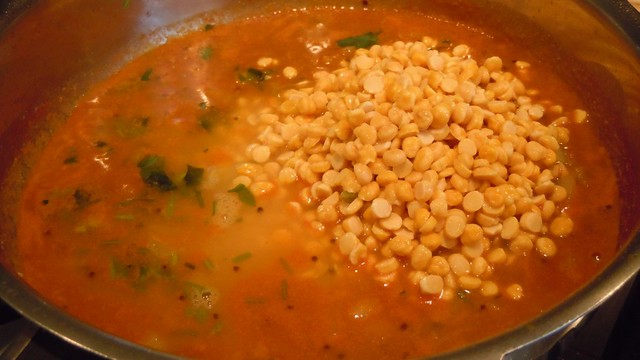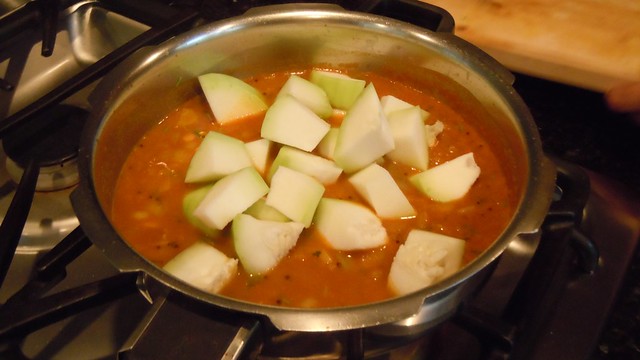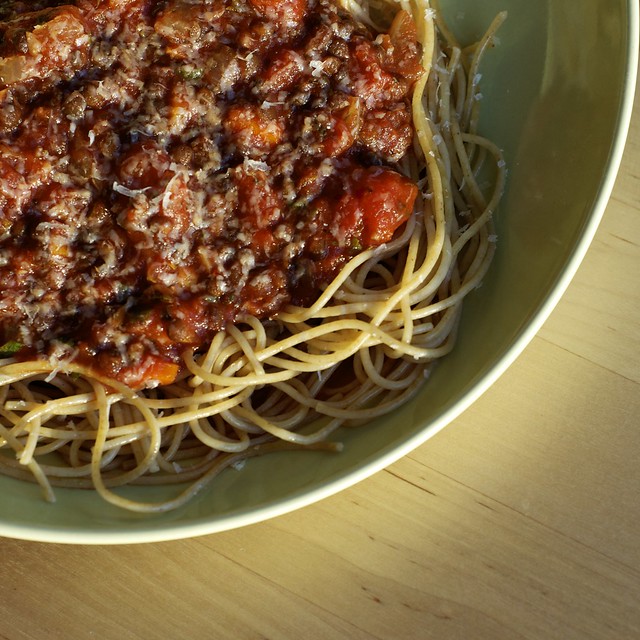



This is my version of a healthy marinara sauce with lentils. Lentils cook in no time in the pressure cooker. Surely by now, I've at least convinced you how awesome a pressure cooker is? I won't give up on you!
This recipe comes together quickly if you can think of it in 3 steps. Step 1, prepare the lentils in the pressure cooker. Step 2, prepare the marinara sauce, and Step 3, cook the spaghetti noodles. Most of the time, I start the pasta boiling water first, and then get to my tomato sauce, but you know your own ability to multitask.
This recipe is dedicated to my hubs. See hubs, now you know how I make it!
Spicy tomato sauce or marinara with beluga lentils
Yield: 4 servings, about 1 and 1/4 cup sauce per serving
Ingredients:
1/2 cup dried beluga lentils or regular green lentils
1 and 1/2 to 2 cups water
2 cloves garlic
a generous pour of olive oil
1 onion, finely diced
1 large carrot, or 2 medium carrots, peeled and quarter diced
1/4 to 1/3 cup of white wine, enough to barely cover bottom of pan (I think red would be fine too; honestly, I've used whatever is in the fridge or pantry) - use vegetable broth or water if avoiding wine.
2 T dried oregano
1 tsp dried thyme
2 T dried parsley
1 tsp dried red chili flakes
1 and 1/4 tsp salt
1, 28 oz can San Marzano style tomatoes either whole or in chunks * see my note below
1/2 cup water
freshly grated parmesan
basil or parsley to garnish
To boil spaghetti
4 quarts water plus salt to boil
1/2 package or 1/2 lb whole wheat thin spaghetti
Special tools: None besides a good knife, and cutting board. Use the small pressure cooker fry pan for the lentils. For the marinara sauce and the spaghetti, have 2 pots ready. The first should be a large pot to cook pasta, the second should be a wide stir fry pan with a sturdy lid. If you don't have a pressure cooker, cook the lentils in a large pot.
*My cooking note: If using whole peeled canned tomatoes, blend half or 3/4 of the tomatoes in a blender and leave the rest sort of roughly chopped. It is OK with me if you want no chunks, just blend all of it. Do this before you get started.
Directions:
See my note above indicated with * above.
See my note above indicated with * above.
Step 1: Add the lentils to the small pressure fry pan pressure cooker. Add the water, stir, and set the cooker over high heat on the stove (these are the first two ingredients on the ingredients list). Close the lid to the pressure cooker. Bring to the first red ring (low pressure) and cook 10 minutes on low pressure. Once time is up, remove the cooker from the heat, and set aside to cool down using the natural release method.
Step 2: Prepare the pasta cooking water. Add the water and salt to a large pot. Depending on your stove, you can begin heating up the water for the pasta.
Step 3: In a separate wide enough skillet with a lid, heat up a few generous glugs of olive oil over medium heat. Once hot add in the onions and stir, and then add in the garlic and carrots. Cook until the onions begin to just brown slightly. Pour in the wine, and cook until half of the wine is evaporated.
Step 4: Add in the herbs and spices and stir together. Next, add in the tomato sauce, water, and salt. Turn the heat down to medium low heat, and cover with a lid so that the sauce doesn't splatter on the cooking range. The water for the pasta should be close to boiling. If not, wait. The sauce will just continue to cook and thicken up a bit.
Step 5: When the pasta water is ready and boiling, add the spaghetti, or other desired pasta, and cook until ready. Next, drain the lentils from the pressure cooker, and then add them to the tomato sauce. Stir and taste the tomato sauce for herbs and salt.
Step 6: When the pasta is done cooking, reserve 1 cup of the hot pasta cooking water and then drain off the pasta in a colander. Toss a little olive oil and a few splashes of the hot remaining pasta cooking water to keep the noodles separate. This is my favorite trick to serving pasta hot.
When ready to serve, add about 1 cup of cooked noodles to a plate and top with 1 and 1/4 cups of sauce. Pass fresh parmesan and chopped parsley at the table.
When ready to serve, add about 1 cup of cooked noodles to a plate and top with 1 and 1/4 cups of sauce. Pass fresh parmesan and chopped parsley at the table.




